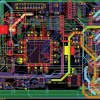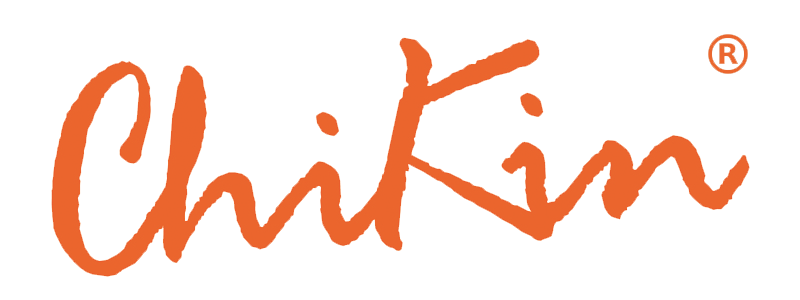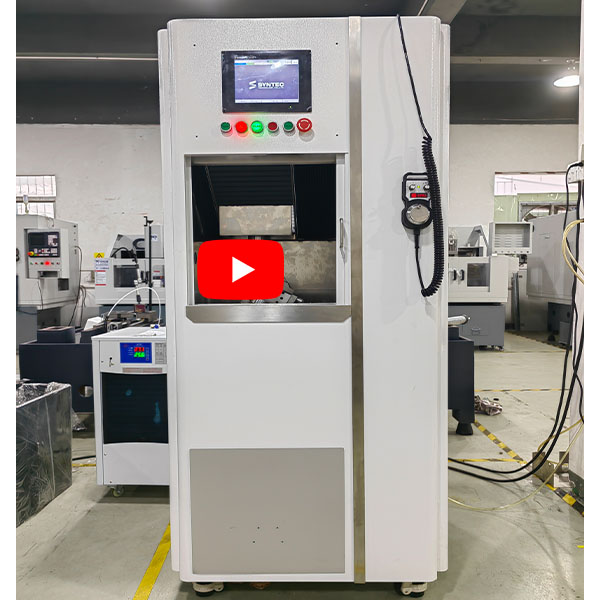CNC Machine Tool Processing Five-axis Machining
Mar 17, 2025
CNC machine tool processing mode
Five-axis machining is a mode of CNC machine tool processing.
According to ISO regulations, when describing the movement of CNC machine tools, a right-hand rectangular coordinate system is used; the coordinate axis parallel to the main axis is defined as the z axis, and the rotation coordinates around the x, y, and z axes are A, B, and C respectively. The movement of each coordinate axis can be achieved by the worktable or the movement of the tool, but the direction is defined by the movement direction of the tool relative to the workpiece. Usually, five-axis linkage refers to the linear interpolation movement of any five coordinates of x, y, z, A, B, and C.
In other words, five axes refer to the three moving axes of x, y, and z plus any two rotating axes. Compared with the common three-axis (x, y, and z three degrees of freedom) machining, five-axis machining refers to the machining of parts with more complex geometric shapes, which requires the machining tool to be able to be positioned and connected in five degrees of freedom.
The machine tools used for five-axis machining are usually called five-axis machine tools or five-axis machining centers. Five-axis machining is often used in the aerospace field to process body parts, turbine parts and impellers with free-form surfaces. Five-axis machine tools can process different sides of the workpiece without changing the position of the workpiece on the machine tool, which can greatly improve the processing efficiency of prismatic parts.
Five-axis machining centers are divided into large five-axis and small five-axis. Today we mainly talk about small five-axis.
Small five-axis machining centers are mainly used to process parts with complex geometric shapes, especially in aerospace, automobile manufacturing, medical equipment and other fields.
Five-axis machining center is a high-tech and high-precision machining equipment specially used for machining complex surfaces. It can accurately process parts with complex geometric shapes through the linkage operation of five axes. Compared with traditional three-axis machine tools, five-axis machine tools can process different sides of the workpiece without changing the position of the workpiece, greatly improving the processing efficiency and precision
Application field Aerospace : In the aerospace field, five-axis machining centers are often used to process high-precision parts such as aircraft engine blades, wing frames, and lining structures. These parts usually have complex curved surface shapes and precision requirements. The five-axis machining center can complete high-precision machining processes in one go, avoiding multiple clampings that affect precision errors.
Automobile manufacturing: In automobile manufacturing, especially the lightweight production of new energy vehicles, the five-axis machining center can process composite materials such as aluminum alloys and carbon fibers, shorten the production cycle, improve production quality, and meet the manufacturing needs of precision parts for new energy vehicles.
Medical devices: High-precision medical devices such as artificial joints and dental implants have extremely high requirements for biocompatibility and surface finish. The five-axis machining center can process materials such as titanium alloys and ceramics to meet the precision machining needs of tiny and complex structures.
Mold manufacturing: In the mold manufacturing industry, the five-axis machining center can quickly complete the processing of polyhedrons or deep cavity structures such as injection molds and die-casting molds, significantly improving mold manufacturing efficiency.
Recent Posts

October 26, 2016
The Most Successful Engineering Contractor
May 12, 2025
China PCB Drilling Routing machine Development
May 06, 2025
PCB Design Process and Key Points






